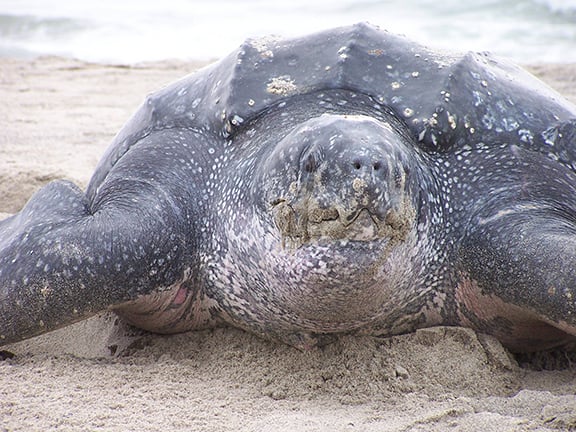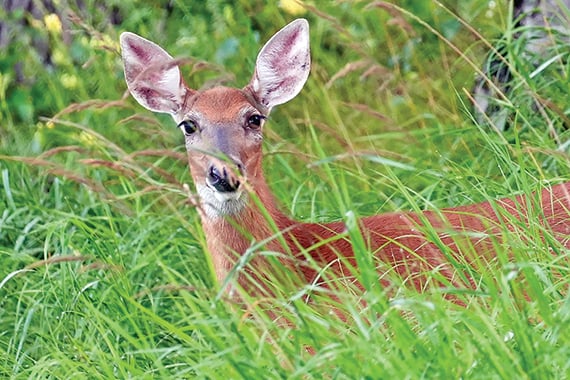Ben Moyer: Will hellbenders really get endangered species listing? Don’t hold your breath – Outdoor News
Never has there been a more unfortunate endangered species than the hellbender. Actually, the hellbender is a candidate Endangered species, not yet officially listed as Endangered by the U.S. Fish and Wildlife Service, the federal agency which administers the Endangered Species Act, made law by the elected 93rd Congress in 1973.
The service did, however, declare its intent to list the hellbender as Endangered in December 2024, a long, long time ago in the upended realm of federal actions. Part of the hellbender’s misfortune may be bad timing.
 Besides timing, other wild things that have suffered decline at human hands had advantages over the hellbender. A bald eagle is perceived as a regal creature, inspiring to see. Its image is everywhere and associated with things everyone understands and supports.
Besides timing, other wild things that have suffered decline at human hands had advantages over the hellbender. A bald eagle is perceived as a regal creature, inspiring to see. Its image is everywhere and associated with things everyone understands and supports.
A grizzly bear is a daunting predator but has cute cubs. Those bright eyes and fuzzy fur melted Americans’ hearts, and the grizzly bear won the federal listing merited by its species’ peril.
Even wolves attracted admirers who advocate federal Endangered status even after wolf recovery exceeded expectations in parts of the West and Great Lakes.
But hellbenders have it tough. To care about their fate, you have to know something of nature. Most people have never seen one or even know hellbenders exist. Those who have gaped at a beast that doesn’t inspire in the exalted way of an eagle.
MORE COVERAGE FROM PENNSYLVANIA OUTDOOR NEWS:
Hunter-killed birds test positive for bird flu in Pennsylvania
More CWD detected in Pennsylvania’s northeastern deer herd
Want to try Pennsylvania’s trout waters on the ice? Here’s how to do it
The nearest image in popular culture might be the villain in the 1950s horror classic, The Blob. Or a prostrate Godzilla – not the terrifying, high-tech-special-effect version, but the goofy rubber-suit fop from old movies where the dubbed-in English dialogue is out of sync with the actors’ lip movements.
Rural people, back in the day, who did get familiar with hellbenders called it “snot otter.” What’s that say about its “cuddle-factor?”
But the hellbender is real. It has a place and a role. Its presence says that part of the earth is still mostly intact. Science knows the hellbender as Cryptobranchus alleganiensis, so named for the Allegheny Mountains, which bull’s-eye its 16-state range in Appalachia, the Mid-Atlantic, and the Midwest. It’s our animal.
It’s also North America’s largest salamander, spending its inoffensive life on the rocky bottom of clean streams gobbling crayfish. A hellbender’s blob-like, undulating skin has a function. It breathes through it. Those flabby folds maximize surface area to take in dissolved oxygen, most easily absorbed in cold fast rivers and streams.
RELATED STORIES FROM OUTDOOR NEWS:
‘Hellbender Defenders’ say proposed endangered species listing is long overdue for huge salamander
Sediment from logging, road building, and mining cuts diminish the hellbender’s ability to breathe, just one of myriad threats we pose to this native amphibian whose numbers and reach are in retreat.
But despite its unglamorous appearance and low-key lifestyle, the hellbender has champions. High school students here in Pennsylvania learned about the hellbender’s plight, then launched a successful effort through the Chesapeake Bay Foundation’s Student Leadership Council to get the hellbender named by the Legislature as Pennsylvania’s Official State Amphibian.
“The hellbender demonstrates the importance of clean water and healthy aquatic ecosystems,” said a Mechanicsburg student among the leaders of the 2016 hellbender appeal. “It is a symbol of perseverance as we work together to solve environmental issues and highlights the impact a small group of motivated environmentalists can have on the trajectory of a species. Listing the hellbender as an Endangered species is long overdue.”
A Pennsylvania high school student said that, and if her intelligence, resolve and focus doesn’t boost our hope for the future, it’s hard to imagine what might.
But back to bad timing.
It is also hard to imagine that the U.S. Fish and Wildlife Service will do with the hellbender in 2025 what it announced it intended to do in 2024.
Under the new administration, the Fish and Wildlife Service is subject to the same anti-science default, broadsword staff cuts, leadership trade-ins and deference to development interests as all federal agencies.
The administration’s pre-election prescription, Project 2025, makes this recommendation: “Direct the Fish and Wildlife Service to design and implement an Endangered Species Act program that ensures independent decision-making by ending reliance on so-called species specialists who have obvious self-interest, ideological bias, and land-use agendas.”
What does that mean? Are biologists who study and document the disappearance of hellbenders “species specialist” ideologues? How would we know about the state of nature without them?
Who should the Fish and Wildlife Service rely on in such questions, if not those who put in the effort to educate themselves about the needs and threats to fish and wildlife? Is seeking even to know the state of nature where you live an ideological bias? Do citizens who spread awareness of the decline of wildlife in their region act out of self-interest?
Let’s hope the students who made us aware of hellbenders are not discouraged by the U.S. Fish and Wildlife Service’s soon-to-come decision on hellbender status. We all need these kids.






